
Key Takeaways
- AI Personalization: Tailors app layouts, alerts, and recommendations to each patient’s needs.
- IoT & Wearables: Syncs real-time health data from devices like smartwatches and monitors.
- Secure Cloud Systems: Stores and shares records quickly while keeping them encrypted and compliant.
- Voice & Chat Interfaces: Let users interact without typing, improving accessibility for all ages.
- Low-Code Tools: Speed up design updates and testing for a smoother UX rollout.
Healthtech startups in 2026 are redefining user experiences to meet the rising demand for digital healthcare. UI/UX is no longer an afterthought; it’s the bridge that connects patients, doctors, and vital health data in a seamless flow.
Modern healthtech design focuses on clarity, trust, and inclusivity. Interfaces are becoming simpler, faster, and more accessible. It ensures that users of all ages and backgrounds can navigate healthcare tools without friction.
This is particularly important for tools such as patient monitoring apps and virtual care platforms. They need smooth designs so patients and doctors can connect anytime without any problem. So, today, don’t miss any words. I’ll show you the most important healthtech UI/UX trends for startups.
Why UX Matters More Than Ever in Healthtech?
It’s true that doctors and nurses do all the things to save lives. But what about the apps that help them? In 2026, UI/UX is mandatory for future-proofing a healthcare startup. Let’s check out the reasons:
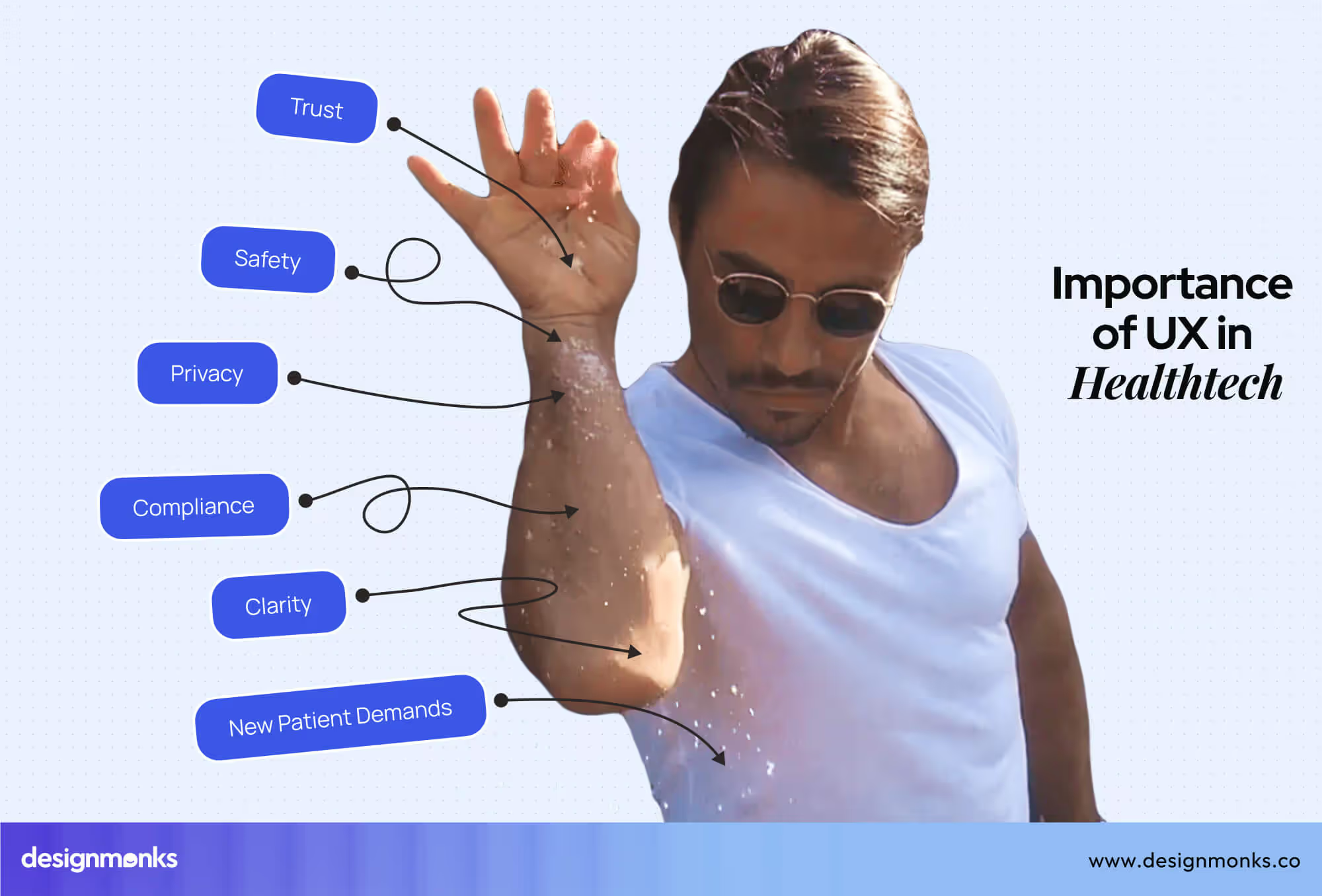
People now use health apps for checking reports, talking to doctors, or tracking health. If these apps are not simple, clear, and easy to use, they can harm trust and care. Here are more facts about why healthcare UX is important:
UX Builds Trust and Safety
A good UX design helps users feel safe using apps for their health needs. If a button is hard to find or the process is confusing, people feel scared to use it again. Clear design builds confidence in patients and doctors.
UX Ensures Privacy and Compliance
Health apps deal with private data like medicines, reports, and patient details. UX design helps show that data is safe. For example, clear privacy settings and simple consent forms make people feel protected. It also helps startups follow health rules and keep user data secure.
UX Creates Clarity and Usability
UX makes apps easy for everyone to use, even for older people or those not good with technology. Simple words, clear buttons, and easy flows help users do tasks without mistakes or confusion.
UX Meets New Patient Demands
Patients now expect health apps to be as easy as shopping or banking apps. They want fast, smooth experiences. Healthtech startups that offer this will win trust and keep more users.
Key Healthtech UI/UX Trends to Follow in 2026
Healthtech has been experiencing rapid growth recently. This year, some healthtech UI/UX trends for 2026 are becoming very important. Trends like personalization and conversational UX have become mandatory. However, let’s look at these medical app design trends one by one.
Dashboard Personalization for Patient Monitoring Apps
Many health apps now let doctors and patients check health data anytime. This is called patient monitoring. For example, a doctor can track a patient’s heart rate from their phone. Or a patient can see how their sugar level is doing.
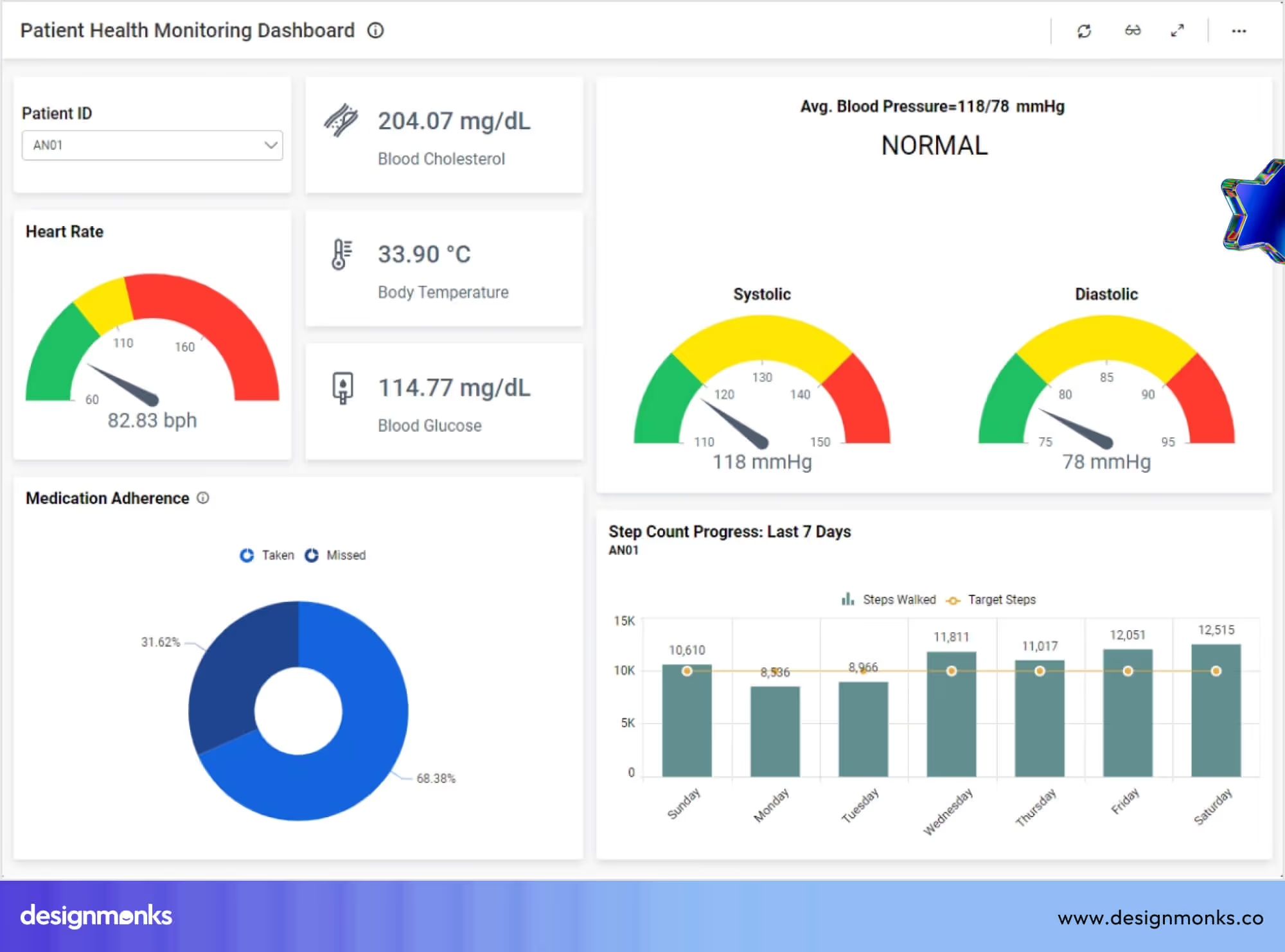
From doctors tracking vitals to patients checking recovery metrics, patient monitoring UI/UX design services must now prioritize speed, clarity, and visual simplicity.
Personalizing dashboards is a big trend. It means each user sees only what they need. A doctor may see a full health history, while a patient sees daily updates in simple graphs. This approach helps people find important data quickly without confusion.
Conversational UX & Voice Interfaces in Healthtech
Another big trend is conversational UX and voice interfaces. It means apps that talk or chat with users. For example, an app might ask, “How are you feeling today?” and note the answer. Or a voice feature may remind an old patient to take medicine.
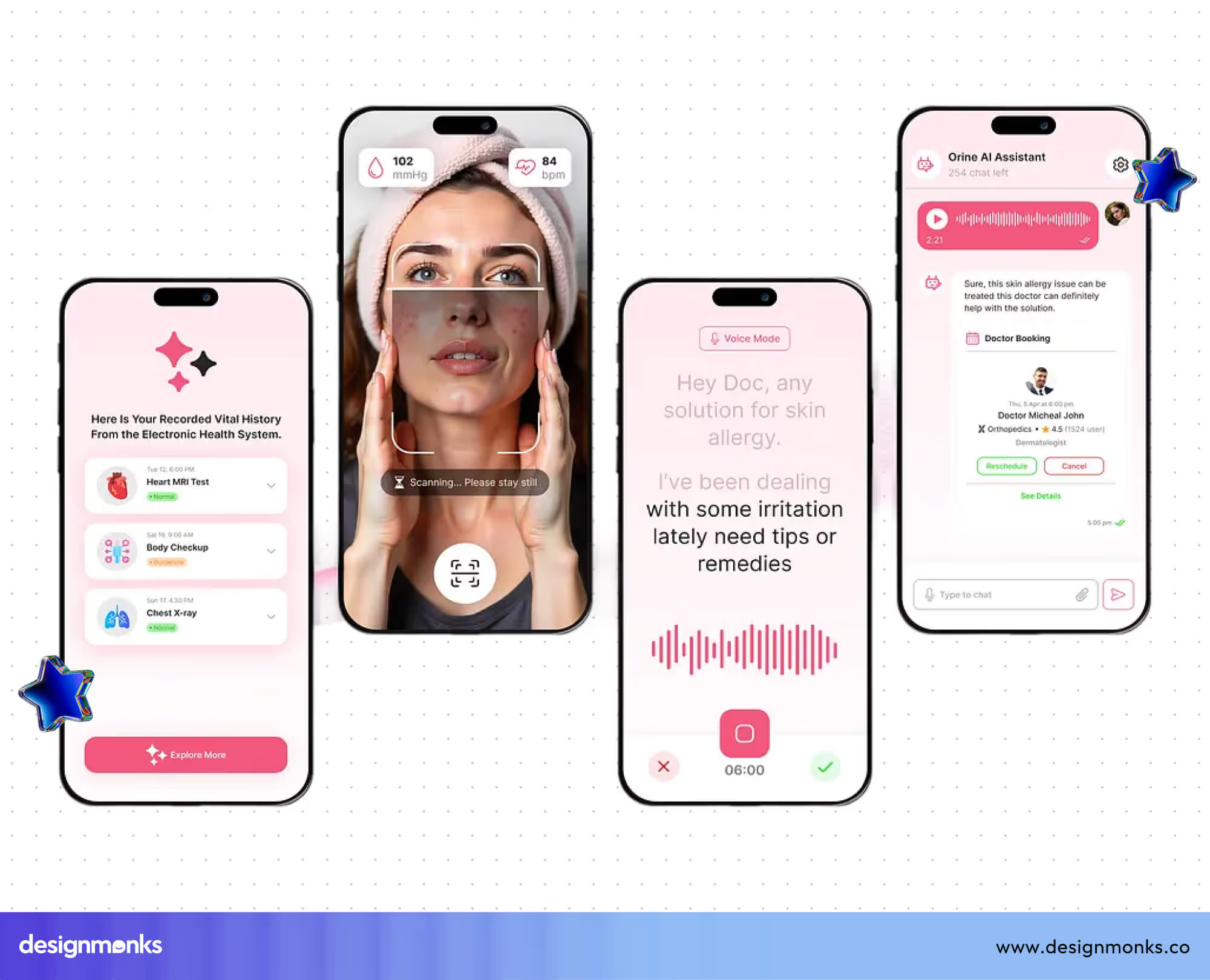
This strategy is very useful in elder care. Older people may find typing hard. Voice commands make it easy for them to use health apps. In telehealth, doctors can use voice features to write notes or check data quickly without typing. These simple tools make healthcare apps friendly and easy for all.
Anticipatory UX with Predictive Alerts
Have you ever seen an app tell you what might happen soon? This is called anticipatory UX. In healthtech, apps use it to show predictive alerts, for example, warning a patient if their blood pressure is going too high.
Good UI/UX design makes these alerts effective by choosing the right timing, tone, and format. Clear visuals, colour coding, and non-intrusive notifications ensure patients notice the warning without feeling overwhelmed.
Easy-to-read language helps users understand the alert instantly, while intuitive placement keeps critical information front and centre. This way, predictive alerts become not just a background feature, but an active, trusted guide for patient safety.
Mental Health UX Principles
Mental health apps are also growing fast. These apps help people feel better, calm down, or talk to a therapist. For such apps, mental health UX principles are very important. They focus on calm designs with soft colours, simple layouts, and gentle words.
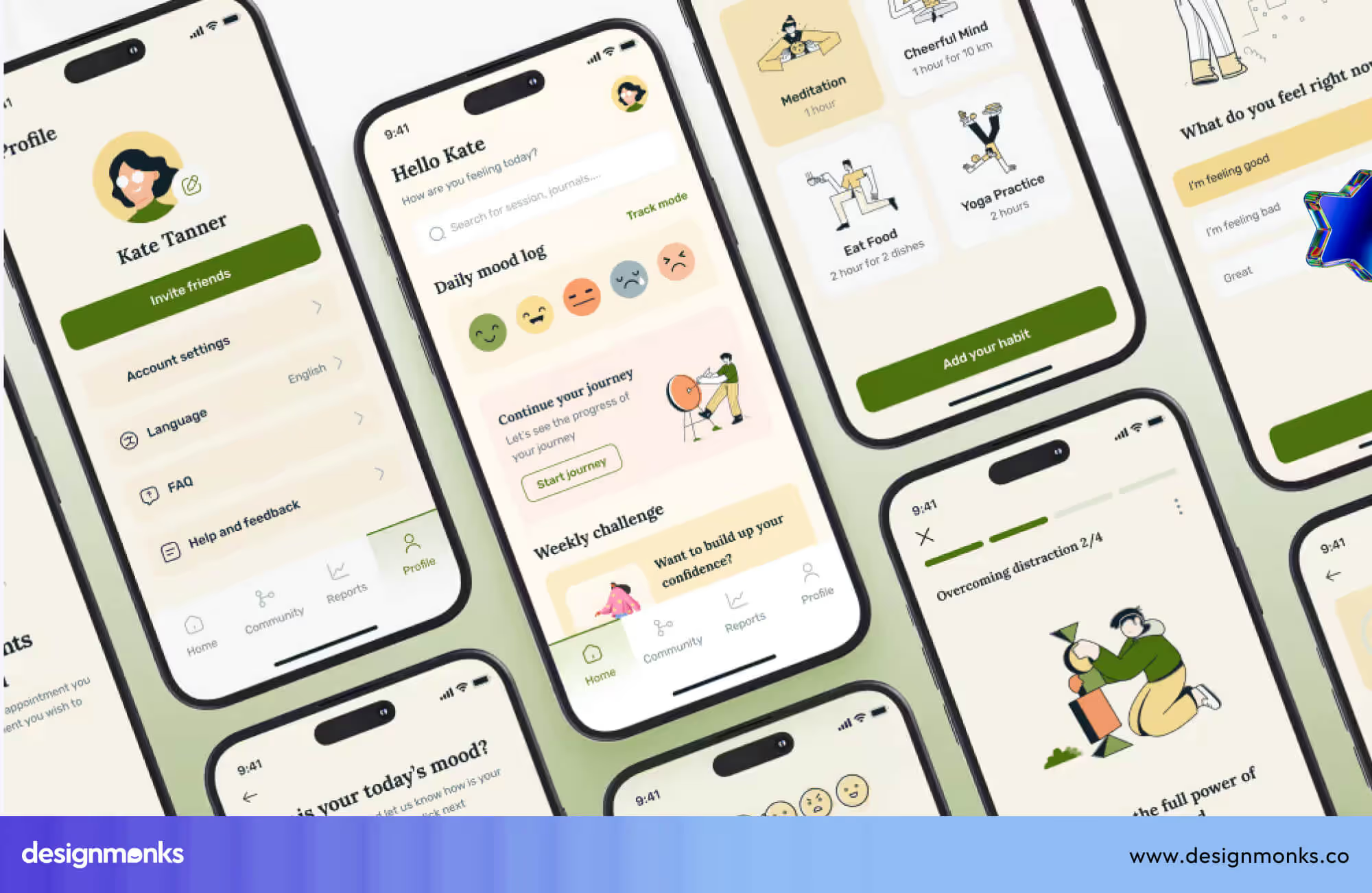
A calming UI helps users feel safe and relaxed. Gentle onboarding means that when someone opens the app for the first time, it explains everything step by step without rushing them. For these, you can try some mental health UI kit.
Low-cognitive-load design means users don’t have to think hard to use the app. This is very important for mental health apps because users may already feel stressed, and a confusing app can make them feel worse.
Compliance-Centered UI
Healthtech apps must follow many rules to keep user data safe. This is called compliance. Apps need to follow laws like HIPAA in the USA or GDPR in Europe. These rules make sure private health data stays protected.
Compliance-centered UI means designing apps to show privacy clearly. For example, easy-to-read privacy policies, simple consent forms, and settings to control data sharing.
This is also important for insurance portals where users check claims or policies. A clear UI builds trust because users know their data is safe. Startups that follow these trends avoid legal problems and keep patients happy.
In 2026, these healthtech UI/UX trends will help startups build apps that people trust and love to use. From personalized dashboards and voice features to predictive alerts and calming designs, good UX makes health tools simple for everyone.
How to Apply The 2026 Healthtech UI/UX Trends as a Startup
Following trends is not enough; knowing how to use them is what makes your healthtech product stand out. Here are simple steps startups can take to bring these UI/UX trends into real projects.
Start with the User Journey
Before jumping into screens and colors, focus on the user journey mapping. Think about what your user is trying to do, check their heart rate, book a doctor call, or understand a health report.

Map out every step clearly. This is even more important for complex tools like patient monitoring apps, where each action needs to feel simple and safe. Designing the full journey helps avoid confusion and keeps the user experience smooth.
Work with Designers Who Know the Rules
Healthtech is not like other apps. There are laws about how you collect and show data. That’s why you should work with designers who have experience in regulated industries.
They know how to create designs that not only look good but also meet privacy and compliance rules like HIPAA or GDPR. Strategies like these keep users safe and your startup out of legal trouble.
Focus on MVP and Flow, Not Features
When you're starting out, you don’t need to build everything at once. Choose a Minimum Viable Product (MVP) design. That means building just the core features your users need most.
However, make sure to avoid the common MVP design mistakes and ensure that the flow feels smooth and the app is easy to use. A few strong and well-designed features are much better than many that feel messy.
Micro Case Studies: Real-World Dashboard Design in Action
Two startups, Qardio and HealthSnap, are setting strong examples in remote health dashboard design. Their approach shows how clean UI, easy steps, and smart data use can lead to better patient care and smoother clinical workflows.
Let’s check out how they worked:
Qardio: Designing for Action and Ease
Qardio has built a strong reputation for turning complex health data into clear and usable information. Their patient monitoring UI/UX design service dashboard collects data from devices like blood pressure monitors and heart rate trackers, and brings it all together in one place.
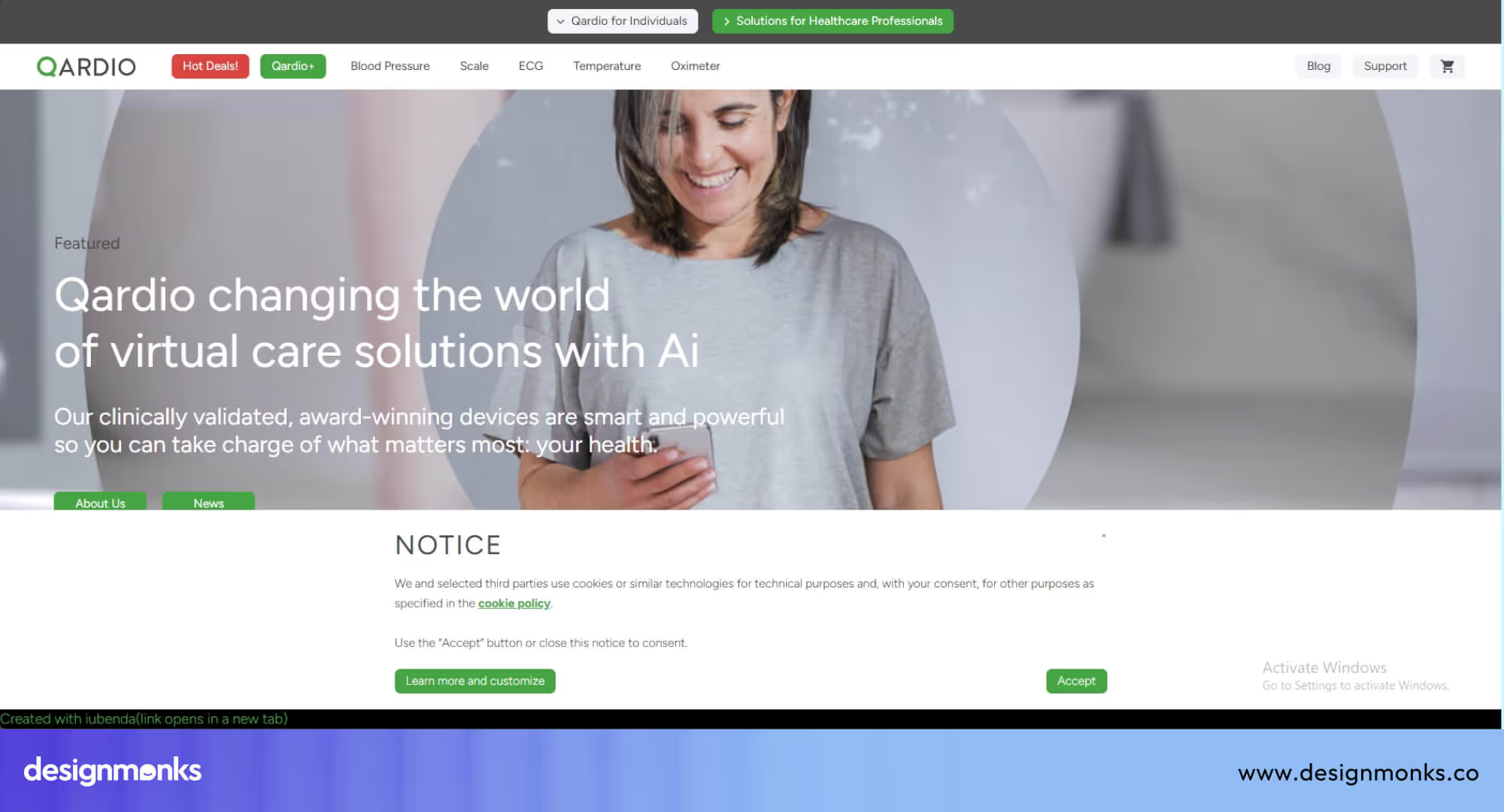
So, what’s the standout feature? Simplicity and speed. The interface is clean, with key vitals shown using graphs and color-coded alerts. Doctors don’t have to dig through pages of data; they can instantly spot if something is wrong and act fast.
What also makes Qardio effective is how it supports both patients and clinicians. Patients can check their own health stats and even set reminders. For care teams, the dashboard offers smart alerts that follow clinical rules.
This approach reduces extra work and helps doctors catch problems before they grow. Plus, it connects with electronic health records (EHRs) and telehealth tools, making it easy to share and act on data.
HealthSnap: One Dashboard, Many Insights
HealthSnap takes a broader approach by creating all-in-one dashboards for care teams and patients managing long-term conditions. Their system combines data from different sources and presents it in a way that’s easy to understand.
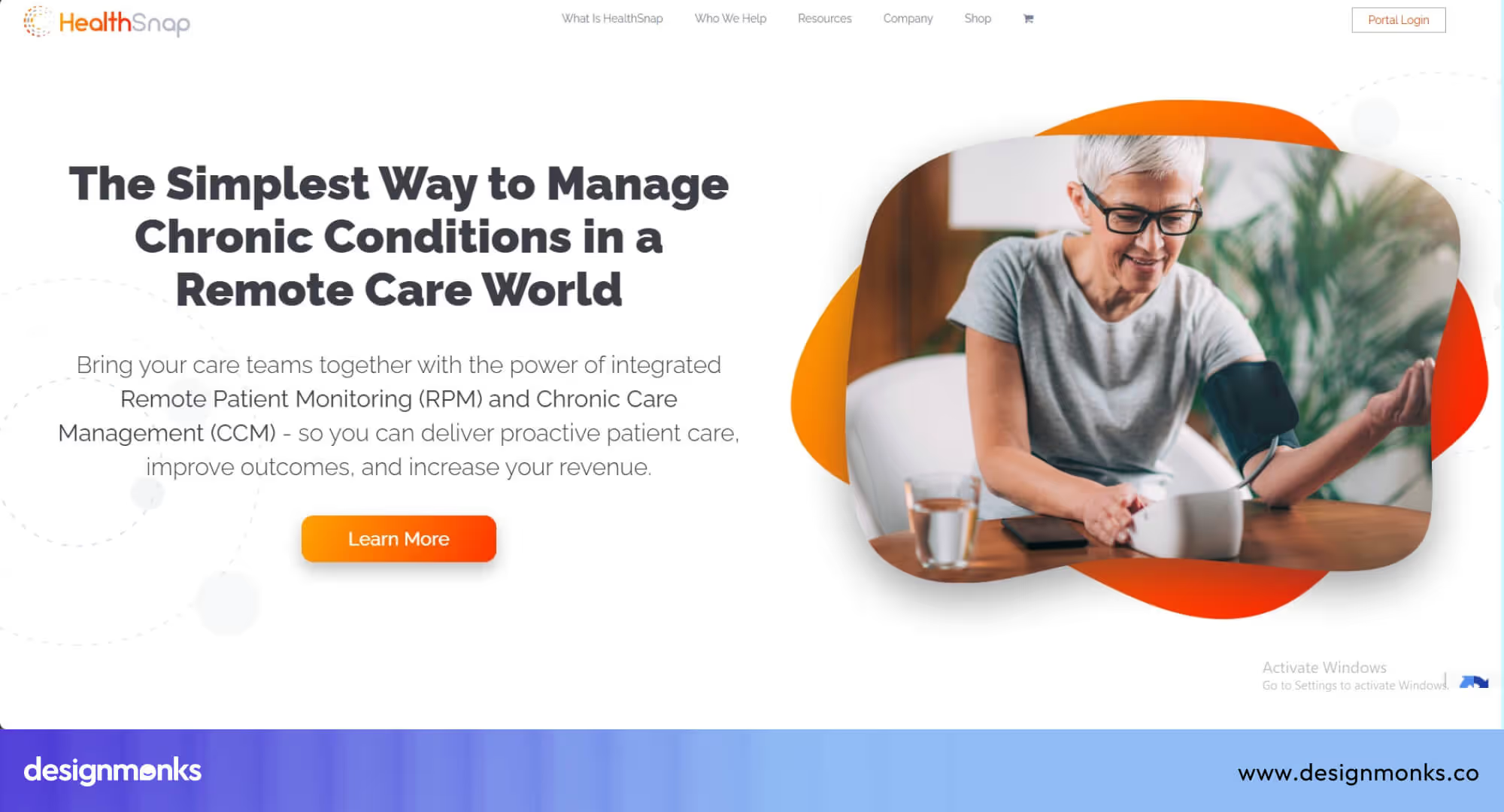
One of its biggest strengths is personalization. Dashboards can be customized for conditions like diabetes or high blood pressure. The layout is simple, showing health progress, goals, and alerts at a glance.
What sets HealthSnap apart is its use of AI-powered insights. The dashboard can highlight which patients need attention, helping doctors manage large groups efficiently.
It also supports billing, compliance, and connects directly with major EHR systems, which simply makes the whole process smoother for healthcare providers.
End Note
Healthtech is moving fast, and the need for smart, simple, and safe user experiences is higher than ever. Startups that focus on clear UX can build trust, support better care, and stand out in a growing market.
No matter if it’s personalized dashboards or voice tools and predictive alerts, every design choice matters. So, it’s important to get the right designer to do the job.
Need help designing for healthtech or patient-facing platforms? We offer expert support in healthcare SaaS UX and patient monitoring UI/UX design services. Just contact us and let us show the best ever healthtech design for your next project.

.svg)




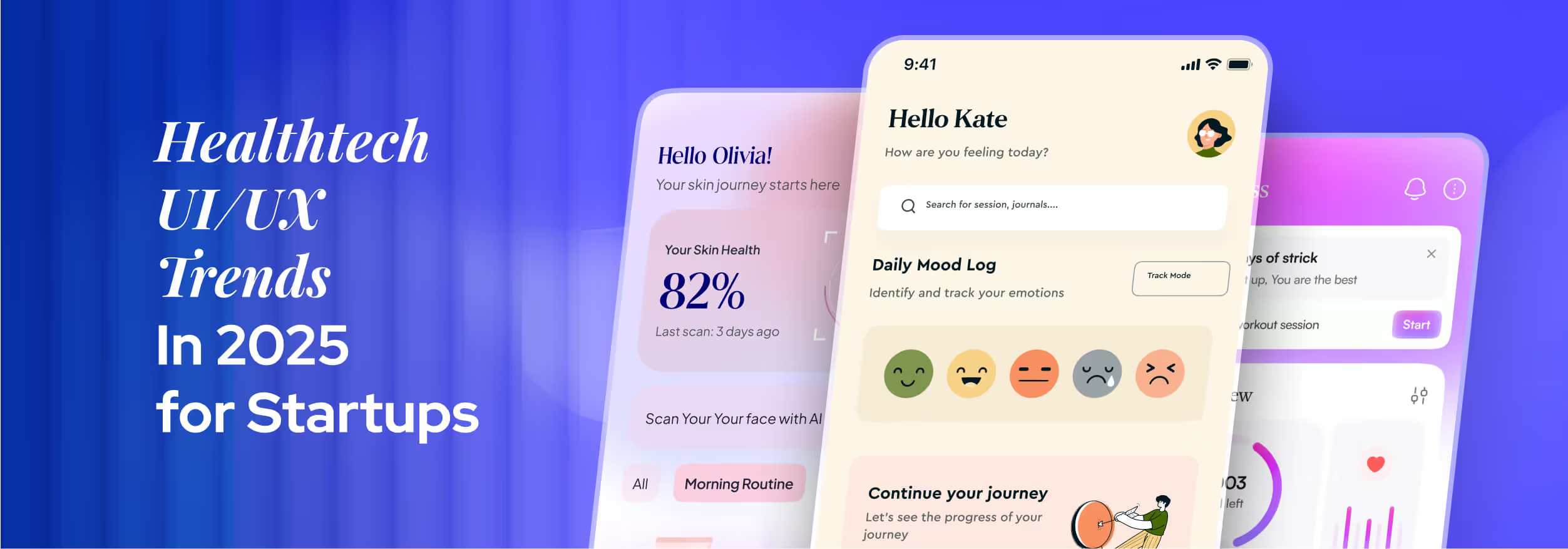

.avif)
.avif)
.avif)
.avif)


.avif)
.avif)
.avif)
.avif)
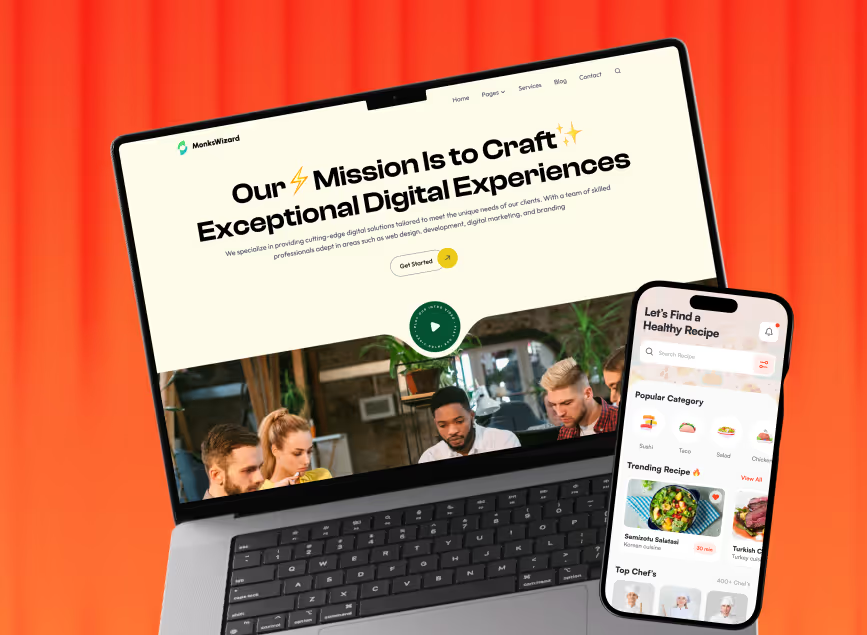

.avif)




